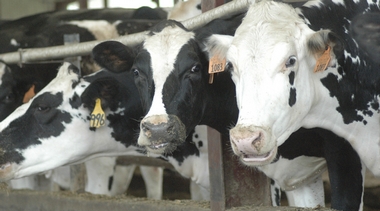Subscriptions
Menu
Advertisements
2010 doesn't look much better for dairy
6/15/2010 |
By Patsy Nicosia |

For dairy farmers, 2009 was a year that rivaled the Great Depression.
2010 doesn’t look a whole lot better.
“We’re not where we thought prices would be when people were making predictions back in the fall,” said Dave Balbian, regional marketing specialist for Cornell Cooperative Extension.
“Milk prices are a little higher, but for many farms, they’re still not covering expenses.”
This time a year ago, farmers were receiving less for their milk than it cost to produce it.
Beginning in June ’09 when farmers and others hosted Congressman Paul Tonko for a summit at John Radliff’s Cobleskill farm, and running into the fall with a rally at the Cobleskill Fairgrounds, dairymen searched for solutions—and found none.
“You just learn to farm with the price of milk,” Mr. Radliff, who was named the 2009 Times-Journal Star for his efforts on behalf of agriculture, said.
“It’s not a good situation, but because I’m small, I have more flexibility…I can absorb more,” he said.
Economists had predicted mid-2009 prices of $15-$16 per hundred pounds, but Mr. Radliff pointed out that with the national economy still reeling, that was overly optimistic.
“When the overall economy rebounds, milk prices will rebound,” he said.
Mr. Balbian agreed that the dairy economy is still being held hostage to the national economy, in part because people aren’t eating out.
“That means less cheese, less pizza, less cheeseburgers…I don’t know what it means for ice cream.”
Mr. Balbian said the average local farm is currently seeing milk in the $15 range, down slightly from the beginning of ’10.
For many dairymen though, that’s still not enough to cover expenses; that would take at least $16.50-$17.50 milk--and even that’s probably not enough to cover lingering ’09 bills.
“Prices look pretty tight for the rest of the year and they don’t look a lot better for 2011,” Mr. Balbian added. We’re not likely to see $20 milk anytime soon.”
If there’s any good news in the dairy picture, it’s that the fallout has been less severe in the Northeast than it’s been in the West, where farmers tend to operate on slimmer margins.
“As bad as things were in the traditional dairy areas, they were worse in places like California,” where most of the increases in production have been coming from, Mr. Balbian explained.
“It may be that we’re down to a really resistant core—good managers with staying power who are dedicated to doing this.”









